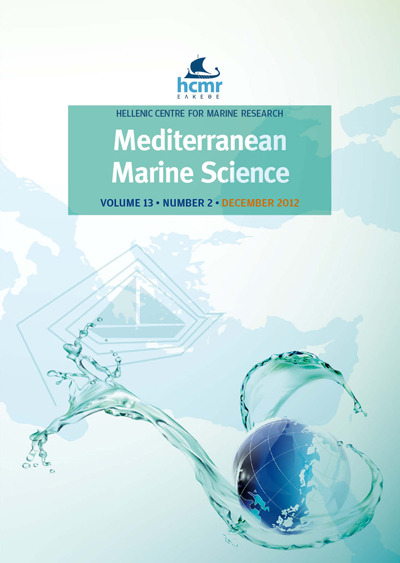Temporal variation of surface chlorophyll a in the Romanian near-shore waters
Abstract
Chlorophyll a (Chl a) dynamics in the near-shore waters of the NW Black Sea was investigated between 2002 and 2010 in the Mamaia Bay (north of Constanta, Romania) in relation to some physical-chemical parameters. Chl a ranged from values below detection limit (0.17 μg.l–1) to 76.13 μg.l–1, and showed large temporal variability (CV = 142.3%), strongly related to the Danube’s discharges, meteorological conditions, and anthropogenic pressures. Seasonally, Chl a showed a winter/early spring maximum, sometimes followed by a stronger one in April/early May, closely linked to the Danube’s higher discharges in spring. After significantly lower concentrations in late spring/early summer, Chl a exhibited its strongest maximum in summer (July-August), followed by another one in autumn (late September–October). Interannual variation of Chl a seems to be controlled by the hydrometeorological conditions in summer. Thus, the highest annual Chl a means were observed in 2006 (8.56 ± 8.35 μg.l–1) and 2010 (9.20 ± 11.72 μg.l -1), when, also, the summer Chl a concentrations were maximal due to the large riverine discharges. The lowest annual Chl a mean was observed in 2004 (4.57 ± 9.81μg.l–1), closely linked to minimal summer Chl a resulted from a strong P limitation during summertime.
Article Details
- Zitationsvorschlag
-
VASILIU, D., BOICENCO, L., GOMOIU, M., LAZAR, L., & MIHAILOV, M. (2012). Temporal variation of surface chlorophyll a in the Romanian near-shore waters. Mediterranean Marine Science, 13(2), 213–226. https://doi.org/10.12681/mms.301
- Ausgabe
- Bd. 13 Nr. 2 (2012)
- Rubrik
- Research Article
Authors who publish with this journal agree to the following terms:
- Authors retain copyright and grant the journal right of first publication with the work simultaneously licensed under a Creative Commons Attribution Non-Commercial License that allows others to share the work with an acknowledgement of the work's authorship and initial publication in this journal.
- Authors are able to enter into separate, additional contractual arrangements for the non-exclusive distribution of the journal's published version of the work (e.g. post it to an institutional repository or publish it in a book), with an acknowledgement of its initial publication in this journal.
- Authors are permitted and encouraged to post their work online (preferably in institutional repositories or on their website) prior to and during the submission process, as it can lead to productive exchanges, as well as earlier and greater citation of published work (See The Effect of Open Access).





